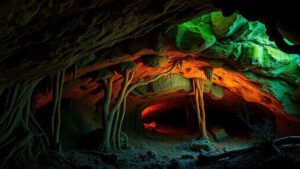The World of Geodes: Cracking Open Nature’s Hidden Wonders
The World of Geodes: Cracking Open Natures Hidden Wonders
Geodes are fascinating geological formations that captivate rockhounds and mineral collectors alike. Often perceived as ordinary stones from the outside, geodes can reveal incredible crystal structures when cracked open. This article delves into the fascinating world of geodes, explores their formation, types, and significance, and offers practical advice for enthusiasts.
What is a Geode?
A geode is a hollow rock formation that contains crystals or mineral matter. Typically spherical or oval in shape, geodes form through various geological processes. The exterior of a geode is often rough and unassuming, with the real beauty hidden within.
Formation of Geodes
Geodes primarily form in volcanic or sedimentary rocks. The process involves several key steps:
- Formation of a Hollow Cavern: This can occur when gas bubbles in molten lava create cavities or through the erosion of rock.
- Mineral Infusion: Over time, mineral-rich water seeps into the cavern, depositing minerals along the walls.
- Crystal Growth: As the water evaporates, the minerals crystallize, often resulting in breathtaking formations of quartz, amethyst, calcite, and more.
One of the most well-known examples is the amethyst geode, which can weigh several hundred pounds and exhibit striking purple crystals.
Types of Geodes
Geodes can be categorized based on their internal crystal formations and mineral compositions. Some common types include:
- Quartz Geodes: Often filled with quartz crystals, these are the most sought-after types by collectors.
- Amethyst Geodes: These geodes contain stunning purple amethyst crystals and are highly valued for both their beauty and metaphysical properties.
- Agate Geodes: Known for their banded structures, agate geodes can display a wide range of colors.
Each type of geode offers unique aesthetic qualities and geological significance, making them a diverse addition to any collection.
Where to Find Geodes
Geode hunting can be an exciting endeavor. Many rockhounds have found success in specific regions known for their geodes:
- United States: The states of Iowa, Arizona, and California are particularly rich in geode deposits.
- Brazil: Renowned for its large amethyst geodes, Brazil is a major source for mineral collectors.
- Mexico: The Mexican region of Chihuahua is famous for its impressive opal and quartz geodes.
Utilizing local rockhounding guides and connecting with nearby geological societies can enhance your chances of finding valuable specimens.
Cracking Open Geodes: A How-To Guide
The excitement of finding and opening a geode is part of what makes the hobby rewarding. Here’s how to safely crack open a geode:
- Choose the Right Tools: Essential tools include a hammer, safety goggles, and a chisel. A bench vise can also stabilize the geode during opening.
- Positioning: Place the geode on a secure surface. If using a vise, clamp the geode gently, ensuring it’s stable.
- Striking Technique: Use a controlled strike with the hammer, aiming for the chisel point, which should be placed at the junction of the geode’s seam.
Be prepared for splinters or pieces to break off, and always wear safety goggles to protect your eyes.
Interesting Facts and Statistics
To enrich your understanding, here are some intriguing facts about geodes:
- Geodes can range in size from a few centimeters to over 2 meters in diameter.
- They can take thousands to millions of years to form, depending on the geological conditions.
- Some geodes can contain quartz crystals over 20 centimeters in length.
Conclusion: Embrace Natures Wonders
The world of geodes is filled with hidden beauty and geological wonder. For rockhounds and mineral collectors, these natural formations provide not only an engaging hobby but also an ongoing conversation with the earths history. By exploring different types, honing hunting skills, and learning the proper techniques to open them, you can continue a tradition of discovery and appreciation for nature’s artistry.
As you delve deeper into this captivating field, remember that every geode tells a story. Each crack and crystal reflects the Earths incredible processes, rewarding both the collectors curiosity and love for geology.



